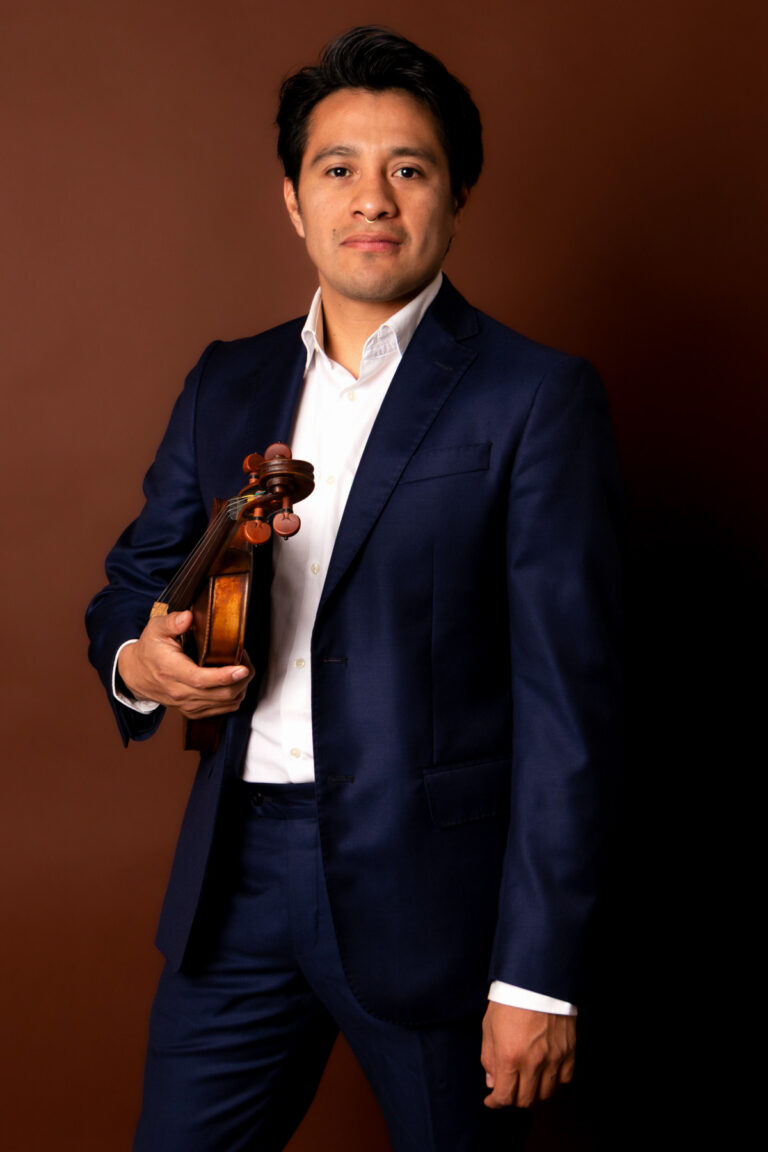
Violinist · Artistic Director of Mexiterranean Ensamble
Samuel Chavira is a violinist and cultural researcher with a deep interest in the connections between Mexican traditional music and European classical styles. He is the founder and artistic director of Mexiterranean Ensamble, a string-based group that combines Baroque music with the sounds and rhythms of Mexico, including instruments like the jarana and influences from regional genres such as huasteco music.
Born in Mexico City, Samuel earned a Master’s degree in Chamber Music from the Conservatorio Santa Cecilia in Rome. His musical path has always been shaped by curiosity about how different worlds of sound interact — from Indigenous rituals to colonial-era compositions.
He has shared his work through seminars and lecture-performances in Mexico, the U.S., and Europe. These include sessions at Skidmore College in New York, presentations at the UNAM (National Autonomous University of Mexico), and an upcoming concert and talk at the University of Hamburg.
Through Mexiterranean Ensamble, Samuel works closely with musicians and dancers to create performances that are both intimate and full of life, bringing traditional Mexican pieces into a chamber music setting.
Samuel Chavira is a violinist from Milpa Alta, Mexico City. He began his connection with music at the age of sixteen, when he started playing traditional music from his hometown. Shortly after, he joined a local ensemble, where he immersed himself in the folk music of various regions of Mexico. This early experience allowed him to develop a strong foundation in traditional performance and an appreciation for the country’s cultural diversity.
The group was later invited to tour with a folkloric ballet through the United Kingdom, Italy, and France. During this tour, Samuel had the opportunity to perform alongside professional dancers and meet musicians from around the world. It was a formative experience: he discovered the richness of Czech folk music and its refined string quartet tradition, was captivated by the virtuosity of Romanian violinists and the complexity of Balkan melodies, and was deeply impressed by the energetic rhythms of musicians from Kenya. These encounters broadened his musical perspective and confirmed his desire to dedicate his life to music.
Upon returning to Mexico, Samuel made the decision to pursue formal musical training. He enrolled at the Conservatorio de las Rosas in Morelia, where he began his academic studies in violin. Later, he participated in an important seminar in chamber music at Skidmore College in New York, USA, thanks to a scholarship he won.
He then continued his education at the Conservatorio di Perugia in Italy, where he collaborated in significant festivals such as Umbria Jazz and Umbra Classica, and took part in Opera productions under the direction of notable conductors.
Samuel later moved to Rome, where he began working with local orchestras, as well as with the Orchestra Toscana Classica and the Camerata Fiorentina in Florence. At the end of his violin studies, he chose to deepen his chamber music training by pursuing a master’s degree with Maestro Roberto Galletto at the Santa Cecilia Conservatory in Rome.
During his studies, Samuel explored major works of the chamber music repertoire, including Mendelssohn’s Octet, Borodin’s string quartets, Dvořák’s piano quintet, and Beethoven’s sonatas for violin and piano. For his final graduation recital, he curated a unique and rarely performed program, choosing to highlight music from Latin America that is seldom heard in European concert halls.
His program included Danzas Latinoamericanas by José Elizondo (for violin and viola), the violin and piano sonata by Ermilo Hernández, Suite Huasteca by Jesús Echeverría, selected pieces from Suite Tarasca (for string quartet and jarana), and Estrellita by Manuel María Ponce, arranged for string quartet and solo violin.
With this rich and distinctive program, Samuel completed his master’s degree with a memorable performance that not only marked the end of his academic journey, but also laid the groundwork for what would become the Mexiterráneo Ensemble, a project dedicated to sharing the depth and beauty of Latin American academic music with audiences in Europe and beyond.